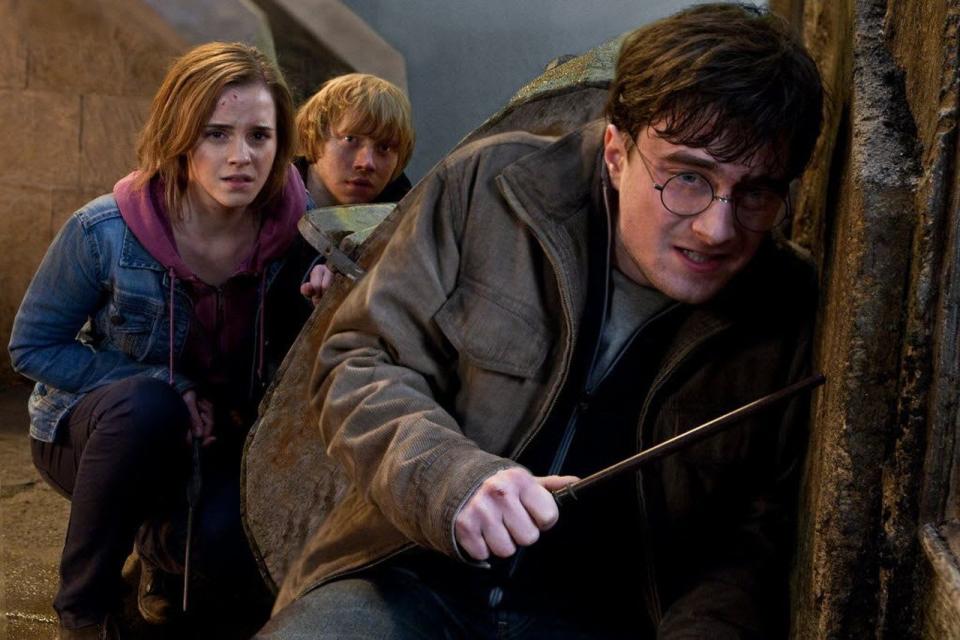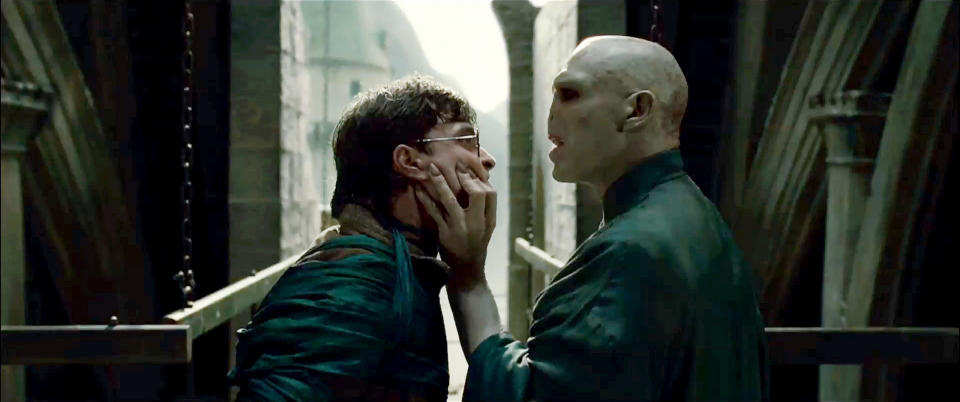The Bittersweet 10-Year Anniversary of the 'Harry Potter' Finale

- Oops!Something went wrong.Please try again later.
Image via Warner Bros.
A school of witchcraft and wizardry was the exact escape needed for any kid trying to run away from their childhood problems and not a single franchise ever existed that made me want magical powers more than Harry Potter. At 10 I wanted nothing more than to receive a Hogwarts letter in the mail and get shipped off to God knows where to perfect my non-existent skills; and even spent that whole year mentally preparing myself for the movie series finale, Harry Potter and the Deathly Hallows — Part 2. After Warner Bros. confirmed a two-part split for the last movie in 2008, a collective sigh of relief spread throughout the fandom as there was finally a split coming that allows the full plot from the books to be fleshed out, unlike the rest of the movie series that had to sacrifice subplots and filler for the sake of time. With Deathly Hallows — Part 2 being the highest-grossing film of 2011, it’s safe to say that director David Yates knew what he was doing. The day we got that movie on DVD I snuggled up in my Gryffindor robe with the rest of my family (even though I was the only fan), rewatched the first part of the two-part Deathly Hallows finale, properly preparing for the epic battle to wrap up a ten-year story in the making. Now revisiting this movie at 21, I can’t help but appreciate its legacy while still side-eyeing the recent actions of series author J.K. Rowling.
This finale set us up for a series of full circle moments that tied certain elements of the 10 year world building with a beautiful bow. Throughout the last film we finally see the significance of snake symbolism that emerged within the first film being emphasized with a physical snake being tied to the very last piece of Voldemort’s soul, the final horcrux. This element adds another layer to Harry’s ability to speak parseltongue outside of his soul tie to Voldemort; it’s an anchor depicting that the requirement of the serpents death for the death of the source of evil shows a deeper reasoning that those deaths are simultaneously required for the death of the iconic “demonic” and “evil’’ universal symbol of serpents overall. My favorite full circle moment had to be Severus Snapes’ weird and apparently evil obsession with Harry being explained as an even weirder tough love mixed with protection treatment? We gain a whole story within one scene that shows Snape vowing to protect Harry for the sake of the love Snape held for Harry’s mother but also the hatred Snape held for Harry’s father permeated and showed itself in the beratement Harry endured from the Defense of the Dark Arts Teacher turned Headmaster. This last film was the final chapter for so many characters whether shown in storyline importance or rather in death, but blended with the seemingly budding future for others (the “main trio” of the series) gave for mourning mixed with rejoicing in being able to see the trio’s kids embark on their Hogwarts journey in the final moments of the film.

As fans of such an iconic brand we knew that there was no way that this could fully be the end, and we were right. The following year after the movie finale, the online world of Pottermore (now known as Wizarding World) was launched, giving fans the opportunity to get sorted into a house, learn spells and originally go through their own story mode as a Hogwarts student. The site has since been revamped to include more news, features, and original writing by author J.K. Rowling explaining certain details of the franchise like the choice of the platform number, ghosts, and wand cores. As tacky as spin-offs can be, we also received Fantastic Beasts and Where to Find Them in 2016 and its sequel Fantastic Beasts: The Crimes of Grindelwald in 2018, both serving as prequels to the Potter series and include many references to the series, including the references to the Deathly Hallows themselves. We continue to receive physical blessings well into this year with the first official Potter flagship opening in Manhattan on June 3, 2021 offering a three-floor abundance of merch from both the Potter and Fantastic Beasts franchises.
Now sitting at the 10-year anniversary of the final Harry Potter movie, we once again celebrate the ending of an era, however, the celebration holds more of a bitter taste this time around thanks to J.K. Rowling. After publicly defending a woman on Twitter who was fired for transphobic tweets in late 2019, Rowling began to receive critical heat and was under the watchful eye of fans, critics, and the world of social media alike. She then continued on her problematic reign in June of 2020 by quote tweeting an opinion article titled “Creating a more equal post-COVID-19 world for people who menstruate,” to which the Potter author stated, “‘People who menstruate.’ I’m sure there used to be a word for those people. Someone help me out. Wumben? Wimpund? Woomud?” The iconic Harry Potter himself Danielle Radcliffe spoke out, standing alongside trans rights through The Trevor Project and for the fans. “To all the people who now feel that their experience of the books has been tarnished or diminished,” Radcliffe said, “I am deeply sorry for the pain these comments have caused you. I really hope that you don’t entirely lose what was valuable in these stories to you.” That’s the whole issue. That is why the celebration is bittersweet in nature because although the actions of Rowling could never take away from the literary masterpiece or the magical cinematic world and character building of the series, it makes everything that much more complicated to enjoy. Who wants to stan a problematic creator?

On a regular basis, we read about creators old and new tarnishing their legacies, and it begs the question: Is this anything new to us? Within the last couple of years we have witnessed the downfall of relatively newer creatives like Chrissy Teigen for bullying allegations and Chris Pratt for his political beliefs as well as his anti-LGBTQ church affiliation. We also experienced the criminal trials of once-beloved creatives like Bill Cosby and R. Kelly. Both exist on a fanatic battlefield that is split between those who separate artists from artistry and those who straight up canceled them with no question. They exist on this same wavelength of Rowling because of their cultural longevity and impact on such large scales—their problematic words and actions have made it difficult, for fans, to wager their love for the art against their moral code of support. All three of these major legacies hit home for many because of the essence of nostalgia, as a bookworm kid who knew nothing about sexual identity that grew into a proud queer adult, Rowling ripped a very personal heartstring. I may never watch a Cosby Show episode again, listen to any iconic cookout track by R. Kelly, or pick up a 400+ page Harry Potter book again—but I don’t know if my nostalgia could let me release my physical attraction and admiration for a movie series that changed my life.
For an author like Rowling specifically, it’s unfortunate and essentially ironic that words were the catalyst for fame and legacy...and also the very essence of her downfall. In the words of the late great Albus Dumbledore, “Words are, in my not so humble opinion, our most inexhaustible source of magic, capable of both inflicting injury and remedying it,” but maybe Rowling needs that reminder.

